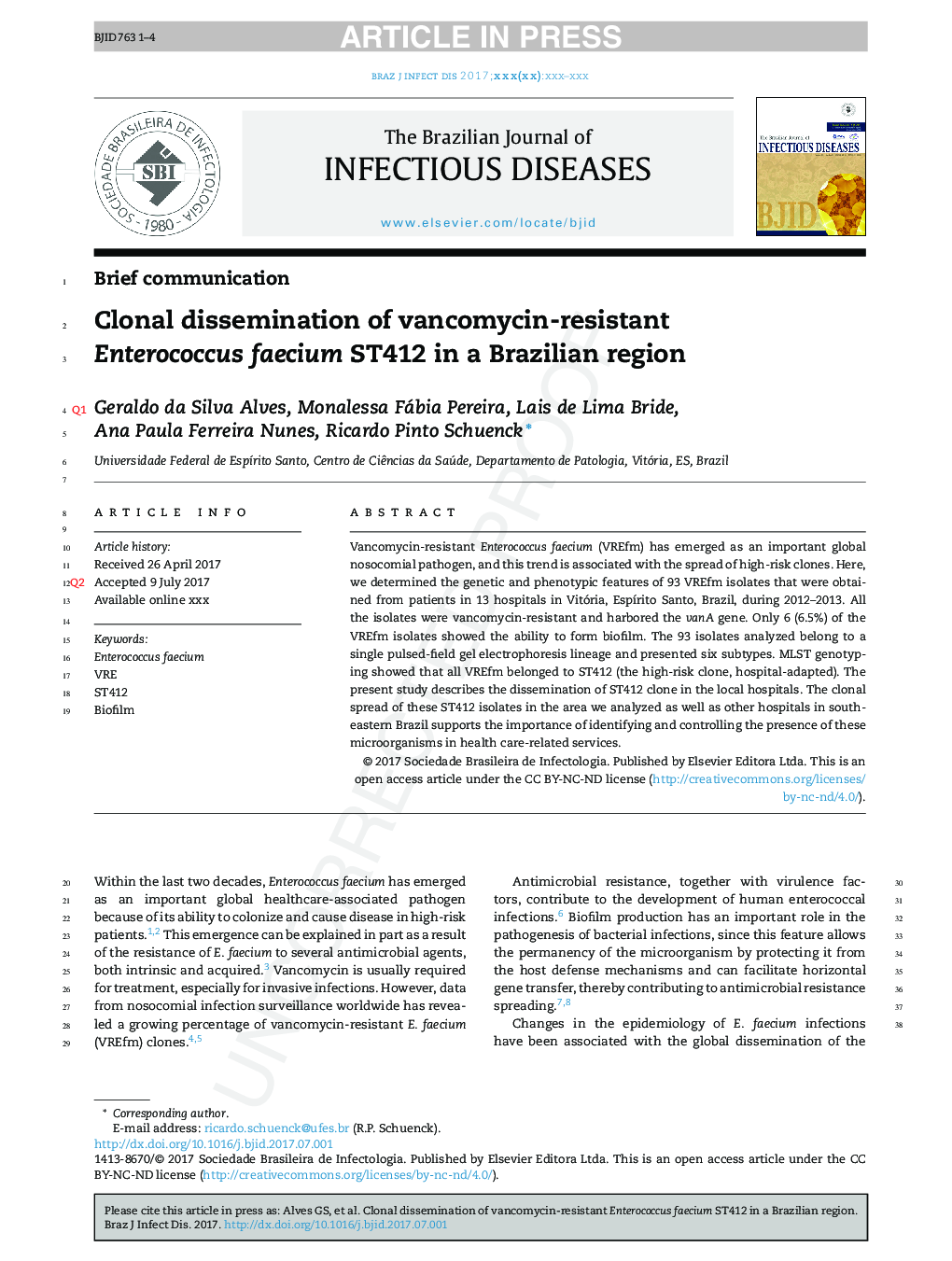| Article ID | Journal | Published Year | Pages | File Type |
|---|---|---|---|---|
| 8736755 | The Brazilian Journal of Infectious Diseases | 2017 | 4 Pages |
Abstract
Vancomycin-resistant Enterococcus faecium (VREfm) has emerged as an important global nosocomial pathogen, and this trend is associated with the spread of high-risk clones. Here, we determined the genetic and phenotypic features of 93 VREfm isolates that were obtained from patients in 13 hospitals in Vitória, EspÃrito Santo, Brazil, during 2012-2013. All the isolates were vancomycin-resistant and harbored the vanA gene. Only 6 (6.5%) of the VREfm isolates showed the ability to form biofilm. The 93 isolates analyzed belong to a single pulsed-field gel electrophoresis lineage and presented six subtypes. MLST genotyping showed that all VREfm belonged to ST412 (the high-risk clone, hospital-adapted). The present study describes the dissemination of ST412 clone in the local hospitals. The clonal spread of these ST412 isolates in the area we analyzed as well as other hospitals in southeastern Brazil supports the importance of identifying and controlling the presence of these microorganisms in health care-related services.
Keywords
Related Topics
Life Sciences
Immunology and Microbiology
Immunology and Microbiology (General)
Authors
Geraldo da Silva Alves, Monalessa Fábia Pereira, Lais de Lima Bride, Ana Paula Ferreira Nunes, Ricardo Pinto Schuenck,
